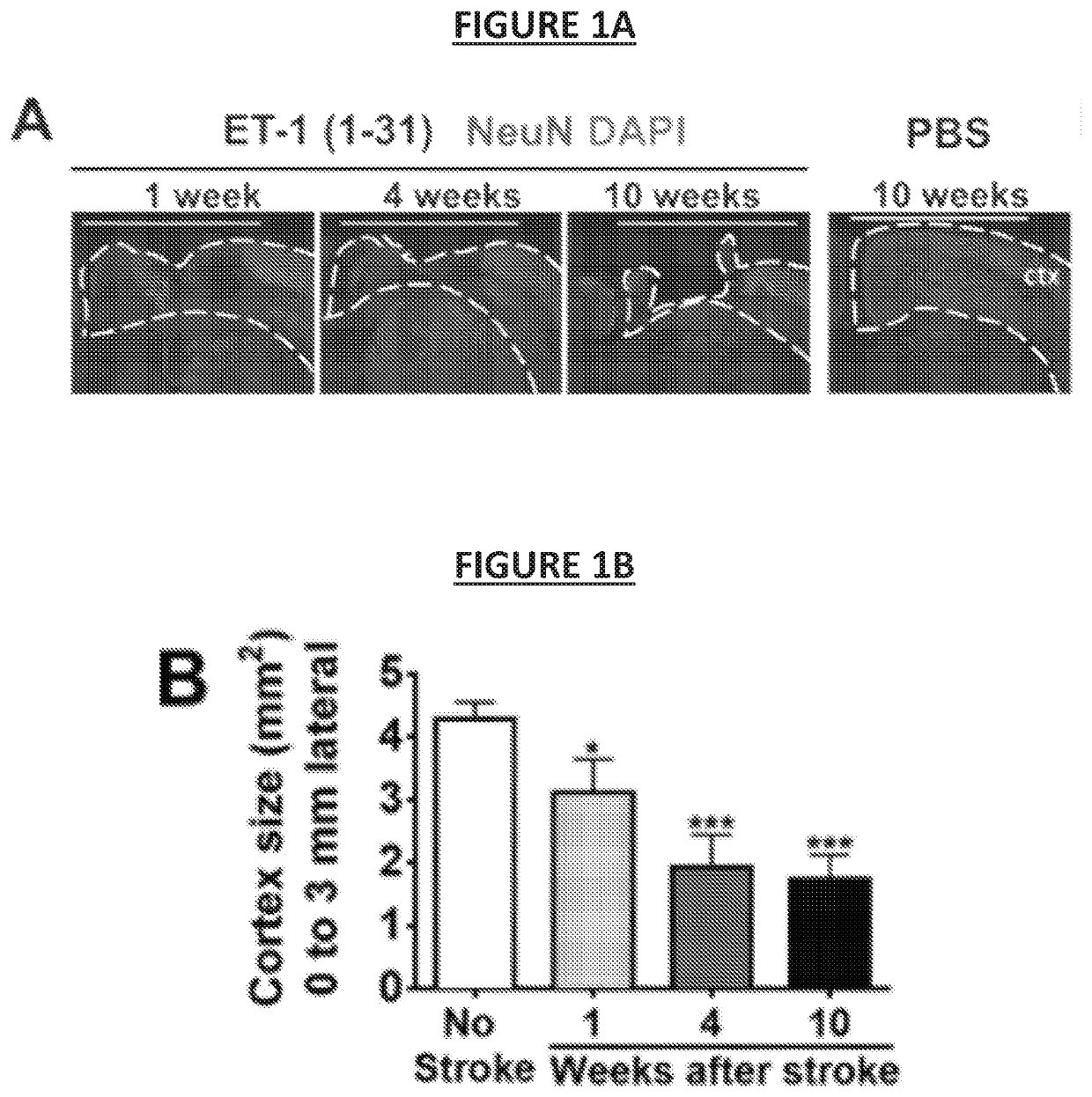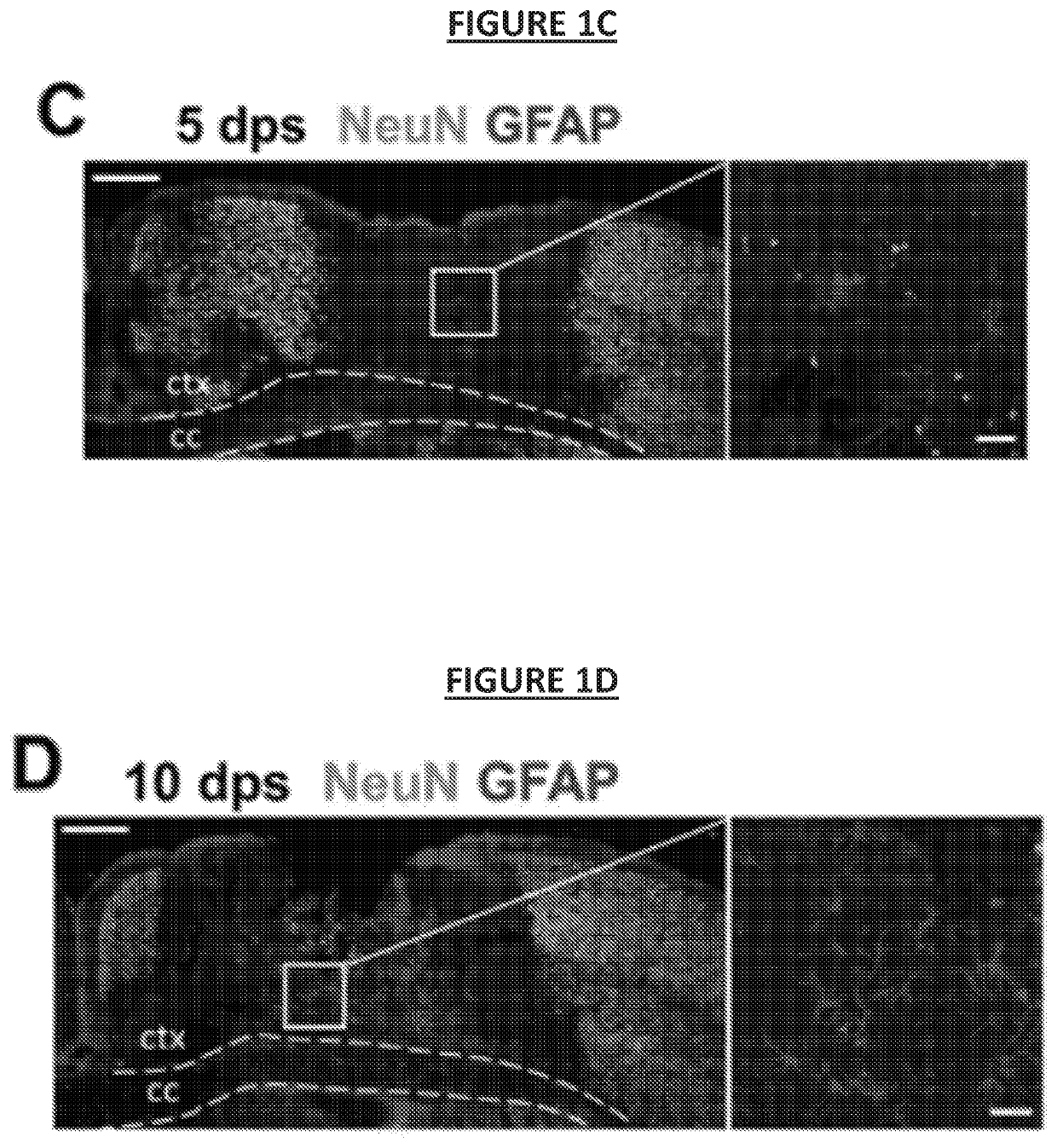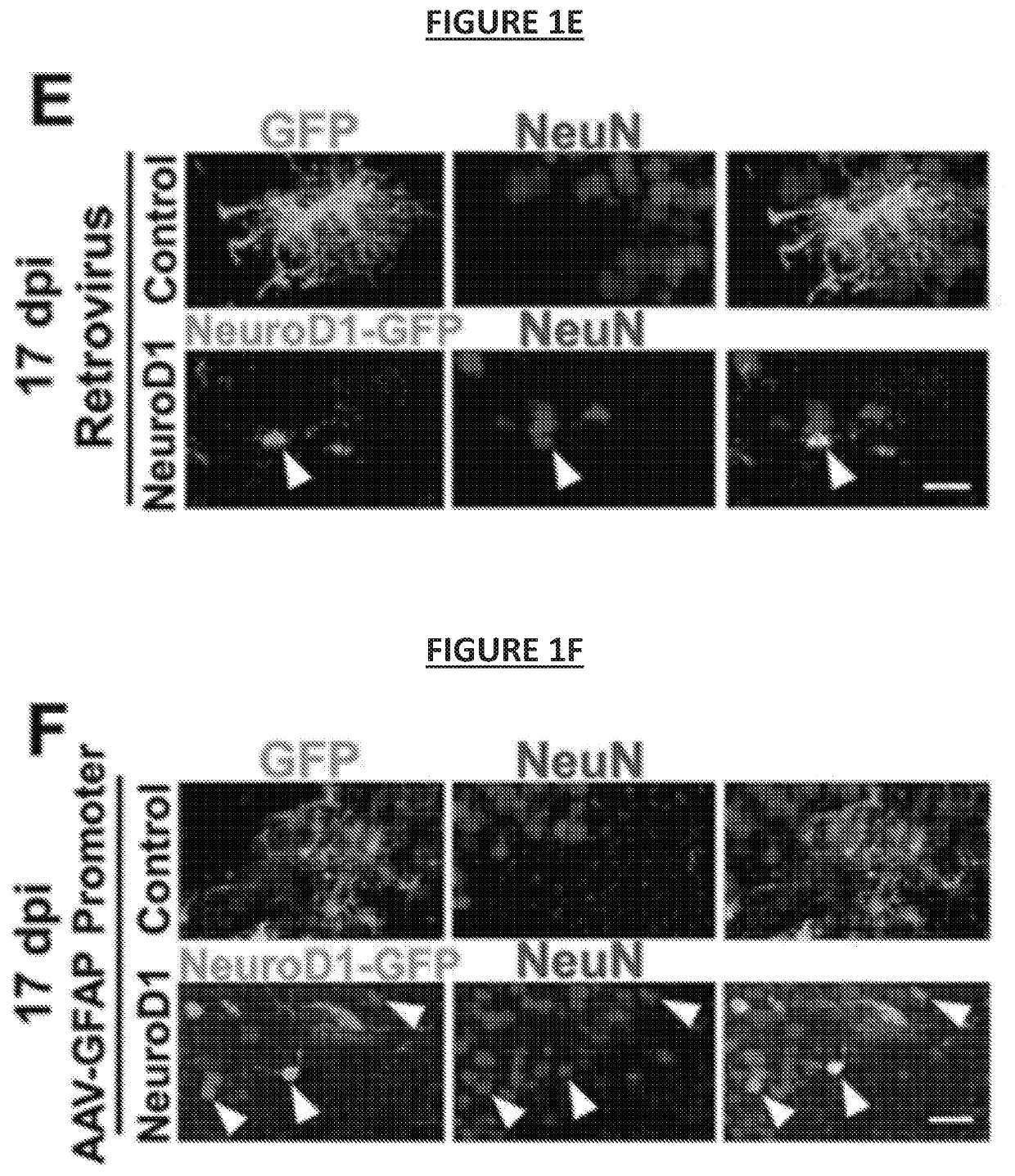Regenerating functional neurons for treatment of neural injury caused by disruption of blood flow
a functional neuron and neural injury technology, applied in the direction of peptides, drug compositions, peptides, etc., can solve the problems of pathological changes in the vicinity of blood flow interruption, often killed or injured neurons and other cns cells, etc., to inhibit axonal regeneration and neural regrowth, improve the effect of defense response, and worsen the infarct area
- Summary
- Abstract
- Description
- Claims
- Application Information
AI Technical Summary
Benefits of technology
Problems solved by technology
Method used
Image
Examples
example 1
onverts Stroke-Induced Reactive Astrocytes into Neurons
[0303]In this example, it was investigated whether in vivo cell conversion can achieve functional brain repair following an ischemic stroke. A focal stroke model induced by the vasoconstrictive peptide endothelin-1 (ET-1) was used to produce consistent local ischemic injury in rodents (Fuxe et al., 1997; Hughes et al., 2003; Roome et al., 2014; Windle et al., 2006).
[0304]When two different ET-1 peptides, one with 21 amino acids (ET-1 (1-21)) and another with 31 amino acids (ET-1 (1-31)) were compared, it was discovered that ET-1 (1-31) produced more severe and prolonged brain damage than ET-1 (1-21) (see, FIG. 2A). A genetic strain of mice with FVB background gave more severe stroke damage than the commonly used B6 / C57 mice (see, FIG. 2A). Notably, significant cortical tissue loss was observed with injection of ET-1 (1-31) into the motor cortex of FVB mice (see, FIG. 1A and FIG. 1B)—establishing a severe focal stroke model with ...
example 2
of Neuroinflammation After Cell Conversion
[0317]Accompanying the astrocyte-to-neuron conversion after NeuroD1 infection in the stroke areas, a significant reduction in GFAP signal in the stroke areas was observed (see, FIG. 5A). This is expected, because >70% of NeuroD1-infected reactive astrocytes have been converted into neurons, and the GFAP signal will be decreased accordingly. However, this also raises a question whether astrocytes might be depleted in the converted areas. To answer this, when the astrocyte-to-neuron conversion was largely completed, the stroke areas close to the infarction (*) which were highly infected by NeuroD1 AAV at 17 days post viral injection (dpi; 27 dps) were examined.
[0318]While astrocytes did show a reduction in the NeuroD1-infected areas, there were still a significant number of astrocytes remaining (see, FIG. 5B). Surprisingly, not only was the astrocyte number reduced, but astrocyte morphology was significantly changed in the NeuroD1-converted ar...
example 3
neration Leads to Neuroprotection
[0325]Consistent with a reduction of neuroinflammation, the number of NeuN-positive neurons appeared to increase significantly in the NeuroD1-infected areas (see, FIG. 7A). Surprisingly, in the stroke areas close to the injury core, not only were NeuroD1-GFP-labeled neurons detected but also many non-converted neurons that were neither GFP-positive (see, FIG. 7A, arrow) nor NeuroD1-positive (see, FIG. 7B, arrow).
[0326]Quantitative analysis revealed that ˜40% of NeuN+ neurons in the peri-infarct areas were NeuroD1-positive and ˜60% of neurons were NeuroD 1-negative (see, FIG. 7C; Control group NeuN+, 27.1±8.1 / 0.1 mm2; NeuroD1 group: NeuroD1− / NeuN+, 64.9,±7.9 / 0.1 mm2; NeuroD1+ / NeuN+, 39.9,±2.4 / 0.1 mm2; n=3 mice per group).
[0327]Similar results were obtained when the GFP+ / NeuN+ neurons in NeuroD1-NeuroD1-GFP infected neurons were quantified (see, FIG. 8A). In addition, the non-converted neurons in the NeuroD1-treated areas also more than doubled the num...
PUM
| Property | Measurement | Unit |
|---|---|---|
| Volume | aaaaa | aaaaa |
| Volumetric flow rate | aaaaa | aaaaa |
| Flow rate | aaaaa | aaaaa |
Abstract
Description
Claims
Application Information
 Login to View More
Login to View More - R&D
- Intellectual Property
- Life Sciences
- Materials
- Tech Scout
- Unparalleled Data Quality
- Higher Quality Content
- 60% Fewer Hallucinations
Browse by: Latest US Patents, China's latest patents, Technical Efficacy Thesaurus, Application Domain, Technology Topic, Popular Technical Reports.
© 2025 PatSnap. All rights reserved.Legal|Privacy policy|Modern Slavery Act Transparency Statement|Sitemap|About US| Contact US: help@patsnap.com



